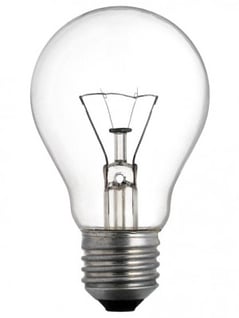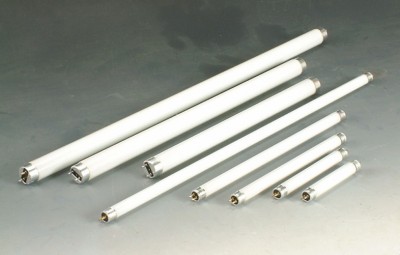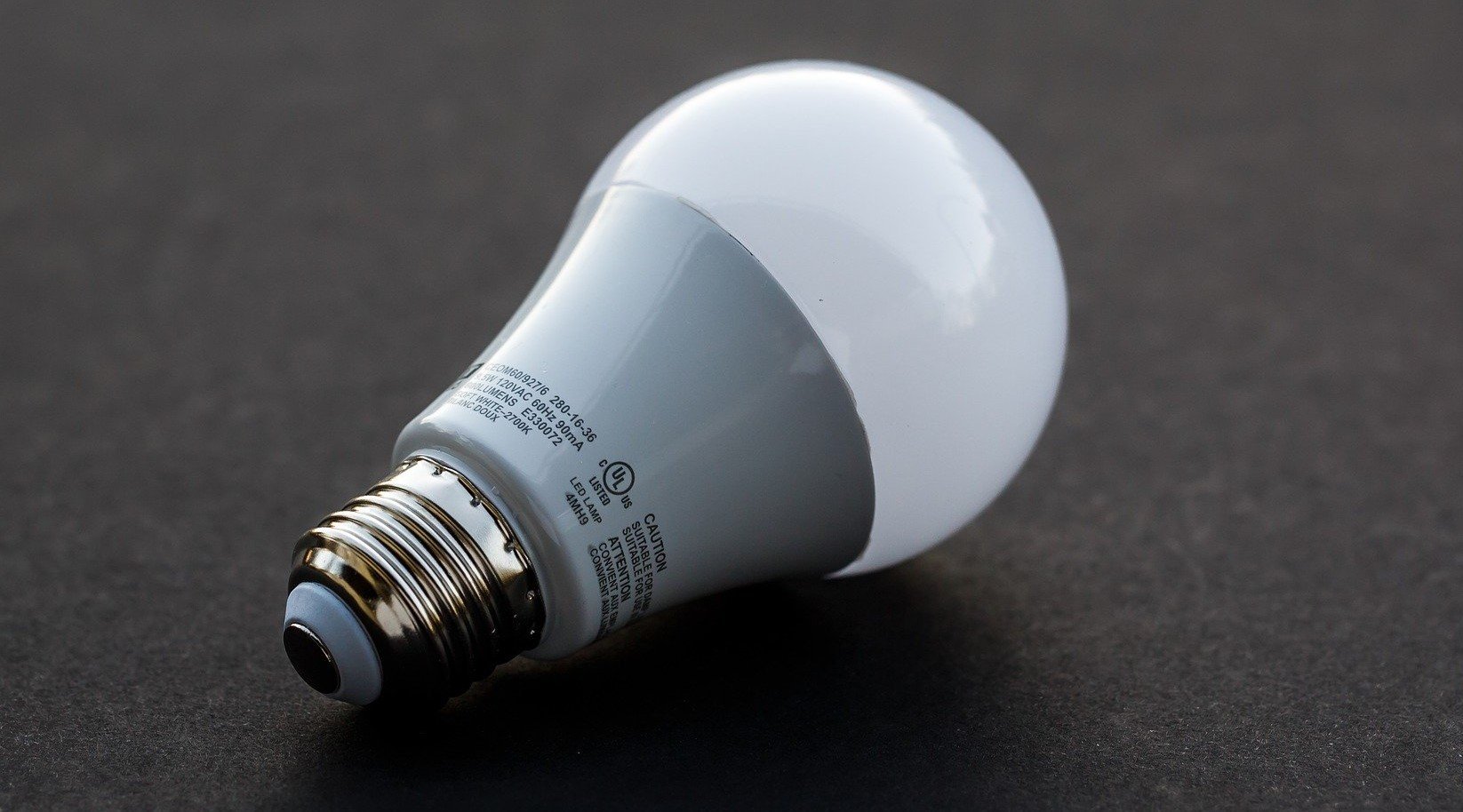
There are several different types of lighting, each with their own operating and dimming characteristics. The table summarises the different types, with further detail given below.
| Incandescent (Tungsten / Halogen) | Fluorescent | LED | |
| Technology | Heating tungsten | Electric current through mercury vapour | Solid state lighting using light emitting diodes |
| Lumens/Wattage | 6 – 24 | 60 | 70 |
| Operating hours | ~1,000 | ~10,000 | ~25,000 – 50,000 |
| Colour temperature | ~2700K | 2700K-6500K (4000k standard) | 2700K – 6000K |
| Power factor | 1 | 1 (low) | <1 |
| Dimming | Phase dimming, compatible with MLV, ELV | Needs dimmable fluorescent ballast, not a retrofit | Can cause problems with low quality fittings. Need compatibility between driver and dimmer |
| Pros | Inexpensive. Easy to dim. Power Factor = 1 | Relatively efficient and relatively long life. Runs at a cool temperature | Very efficient. Runs at a cool temperature. Colour changing possible |
| Cons | Very inefficient. Produce heat and have short life | Very inefficient. Produce heat and have short life | Power factor <1. Dimming can be challenging with low quality fittings |
The incandescent lamp is one of the oldest electric lighting technologies available. It is also the one which most of us over a certain age have grown up with, having changed very little in 100 years.
It produces light by passing electricity through a filament wire which becomes hot and glows. Over time the tungsten evaporates, causing the filament to break.
The production of heat makes the incandescent lighting the most inefficient lighting type, with efficiencies ranging from 6 to 24 lumens per watt, and a comparatively short life of 750 – 2500 hours.

The lights are easily dimmed and can in fact be combined with MLV / ELV dimmers.
When the light is dimmed, the filament is not as hot, improving the lifetime of the lamp.
Fluorescent lamps have been in use since the 1940s and are popular in commercial applications. They have a relatively high efficacy and long operating life.

They are made up of a glass tube filled with a mercury gas. The tube is coated on the inside with phosphorous. When an electric current is applied, the phosphor fluoresces, producing visible light.
The starting voltage and current flowing though the lamp is regulated by a ballast.
The most common lamp type is the four-foot (F40), 1.5″ diameter (T12) straight fluorescent lamp. More efficient fluorescent lamps are available in smaller diameters, including the T10 (1.25 “) and T8 (1″).
Compact Fluorescent Lamps (CFLs) were designed to replace incandescent lamps. The tube is curved so that if fits into the same space as an incandescent light bulb. They contain an electronic ballast in the base of the lamp.
Colour temperature ranges from warm (2700K) to very cool daylight (6500K). Cool white (4000K) is most commonly used.

In order to dim fluorescent lamps, they must have a dimmable ballast with a fluorescent dimmer. A standard switched ballast will not dim.
Fast becoming the most popular form of lighting, LEDs are solid state lamps using light emitting diodes to create light (electroluminescence). LEDs have a driver that regulates the current flowing through them.
They are by far the most energy efficient source of lighting, running cool, typically for 25,000 – 50,000 hours.

Unpredictable dimming results unless compatible and high quality drivers and dimmers are used. Problems of excessive flickering, inconsistency across brands as well as ‘drop-out’ where the light turns off before the dimmer is off, or ‘pop-on’ can occur. It is very important to test extensively for compatibility of lamp / driver and dimmer.
We offer LED upgrades for commercial properties at no upfront cost:
The tungsten halogen lamp is a refinement of the incandescent lamp. A small quartz capsule contains the filament and a halogen gas (e.g bromine, iodine). The gas produces a chemical reaction which redeposits evaporated tungsten back onto the filament. This process extends the life of the filament and keeps the bulb wall from blackening and reducing light output. The filament can also operate at a higher temperature, producing a whiter light and improving efficacy. The beam produced is highly focused, making it ideal in retail displays and accent lighting.

Low voltage halogen fixtures use a transformer to step the 120V line voltage down to 12V or 24V.
A magnetic transformer reduces the operating voltage using copper wire wound around a steel core which is inductive by nature. This type of transformer is fairly large and heavy.
An electronic transformer reduces the operating voltage with electronic circuitry, which is capacitive by nature. This type of transformer is compact and fairly lightweight, but can be prone to reliability issues if there is a large difference between the transformer and lamp.
The dimmer must be matched to the type of low voltage fixture being used: MLV requires MLV dimming, ELV requires ELV dimming. Both dimmer types can also be applied to incandescent loads, although there can be compatibility issues between incandescent lights and ELV dimmers.
Copyright © Spirit Energy 2026 · info@spiritenergy.co.uk · 0118 951 4490
Jobs and Careers
Interested in joining the Spirit team? Email jobs@spiritenergy.co.uk
Spirit House, 25 Albury Close, Reading, RG30 1BD
(Location formerly known as 44 Portman Road, Reading, RG30 1EA)
Spirit Energy is the trading name of Spirit Solar Ltd · UK Company Number 07138647
Although care is taken to ensure that the information on our website (www.spiritenergy.co.uk) and any guides, calculators or checklists provided by us, electronically or otherwise, are accurate and up-to-date, we cannot accept any responsibility for mistakes or omissions. We enter into no express or implied conditions, warranties, terms or representations regarding the quality, accuracy or completeness of the information. We exclude to the extent lawfully permitted all liability for loss or damage, whether direct, indirect or consequential arising out of your use of our website or any guides, calculators or checklists provided by us, or from any information or omission contained in our website or any guides, calculators or checklists provided by us.